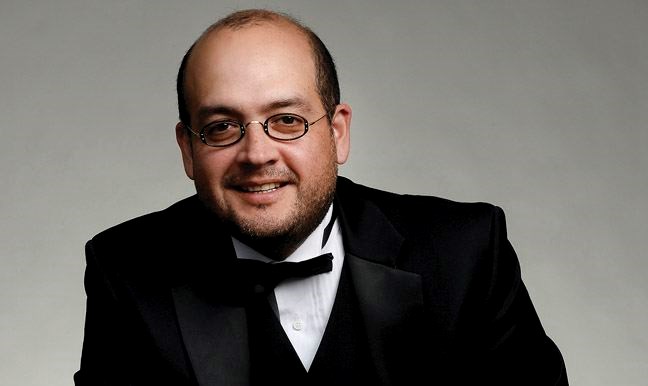There are several pieces of music on the PGSO agenda this Saturday night, but even the musicians are definite about what the favourite is.
"When we're rehearsing, everyone gets through each piece as it comes up, but whenever we're done one they all ask just one thing: can we do Bolero next? When are we getting to Bolero?" said Jos Degado-Guevara, the artistic director of the Prince George Symphony Orchestra.
There is no denying the appeal.
French composer Maurice Ravel wrote it in 1928, commissioned by ballet/acting star Ida Rubinshtein to create a work she could dance to that was Spanish-flavoured and set to the bolero meter.
Did Ravel ever stick to that meter. In an act of brilliant musical restraint, the entire piece (it runs 15-20 minutes depending on the orchestra) is essentially the same melody looped numerous times over the same metronomic beat from beginning to end.
It sounds stilted. It was even deliberately made to be stilted. It isn't. Audiences and dancers have been mesmerized by it ever since the night it premiered at the Paris Opera.
"The interesting thing about Bolero is that Ravel took it as a compositional exercise," said Delgado-Guevara. "He wanted to use one melody and see how far he could get with it. He was honestly expecting boos and tomatoes from the audience, but even in his time, right at the premier, people just loved it - how he handled the repeated action of it. It struck a chord."
Critics hailed the piece and Rubinstein made a meal of it. Although it was not at all a feature-length ballet, just 16 measures, she was the first to take Bolero in a direction Ravel had not been anticipating.
"To him, the sound he was going for was mechanization, assembly line repetition," Delgado-Guevara explained. "He even wanted the silhouette of a factory as the set, on opening night, but she had a totally different vision. It just shows that just because you are a master of music doesn't mean you can predict how the audience will react. She took it in whole different direction, and I think audiences have always followed her intuition on that more than Ravel's. When she danced it, she made it into something... suggestive, shall we say. It was passionate and sensual to her."
Her instincts were already strong on the side of evocative art. Rubinstein was, after all, someone who married her own first cousin just to trigger the status of matrimony in order for her to then travel and do business as she saw fit instead of constantly chaperoned according to European custom at that time.
She also performed the famed Dance Of The Seven Veils down to full nudity on stage - in 1908.
Furthermore, Rubinstein formed her own production company, commissioned the piece Le Martyre de Saint Sebastien and caused the Archbishop of Paris to issue a ban on any Catholics attending the show because the titular character was played by Rubinstein herself, a woman and a Jew. Parts of this work are still favourites of musicians to this day (the music was composed by none other than Claude Debussy.)
Yes, Rubenstein knew the theatrics of society as much as the theatrics of stage, and she knew Bolero was a winner.
"Everybody who plays this piece loves it," said Delgado-Guevara. "You can see it on the faces of the musicians as they wait for their parts to come up. It's famous for building up to the big ending, and it's quite challenging for having to stick so perfectly to that repetitive melody. When you play your part, you have to nail it."
One could say Bolero was the world's first pop song. Acts like AC/DC and Hank Williams and thousands more like them have made careers out of a simple, single melody atop a small rhythmic circle of percussion. But Delgado-Guevara said even the modern pop song has the chorus and the bridge parts to break up the monotony, even if the song is only three or four minutes long. Ravel didn't do even that. He keeps the audience engaged by focusing on different instruments taking a prominent role in turn, and then layering them up into a grand finale.
The first pop song is debatable, but certainly Bolero is one of music's original earworms - you know, those songs that you can't get out of your head once you hear it, and it's easily triggered ever after. Hear - or even think of - that opening tap-tappity-tap drum and wa-wa-wa-wa flute and you're hooked for hours, sometimes.
Why imagine it when you can have it in full symphonic effect, all around you, in person. Bolero is the headline work this Saturday night when the Prince George Symphony Orchestra performs at Vanier Hall starting at 7:30 p.m. on the eve of Valentine's Day.



